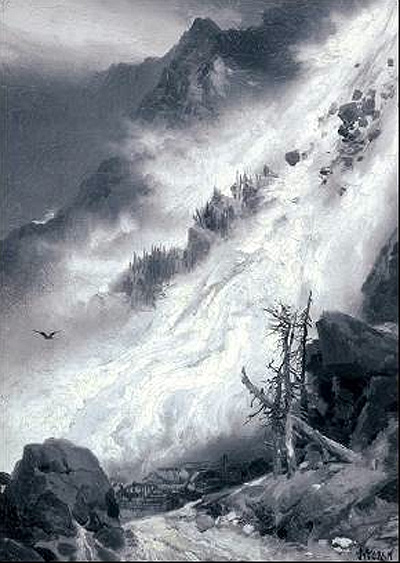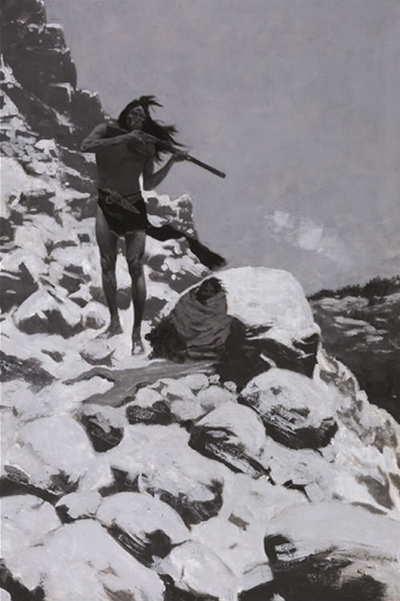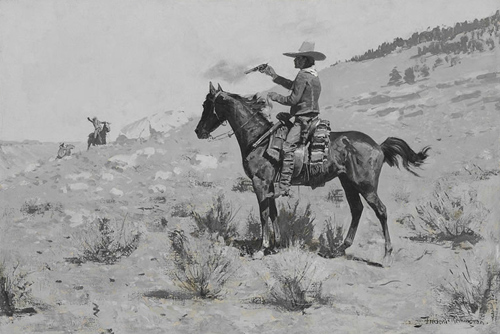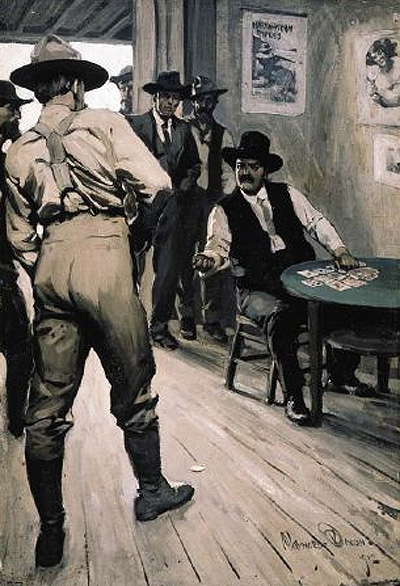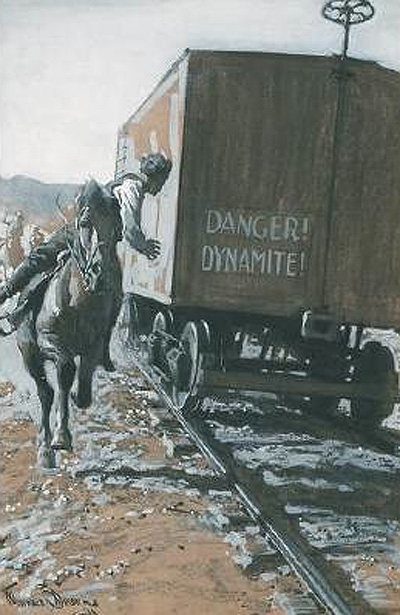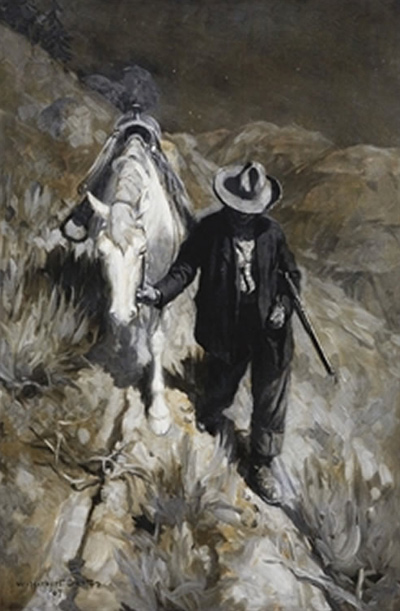Image of the Day, December 14, 2011
 Wednesday, December 14, 2011 at 9:15PM Tweet
Wednesday, December 14, 2011 at 9:15PM Tweet By Donna Poulton

Not only is The Oregon Trail one of the classic page-turners in American western literature, the book was also beautifully illustrated in successive editions by such notable artists as Frederic Remington, N.C. Wyeth, Thomas Hart Benton, and Maynard Dixon. Not shabby. At age 23 and recently graduated from Harvard Law School, Francis Parkman travelled the Oregon Trail through Kansas, Nebraska, Wyoming, and Colorado. During his 1846 trip, he kept a journal, which was initially serialized in Knickerbocker’s Magazine between 1847 and 1849. Herman Melville favorably reviewed the book, citing its “true wild-game flavor.”

After numerous editions and millions of books sold, The Oregon Trail “computer game” has succeeded original book sales with a staggering 65 million copies sold. But I doubt that it can compare to the beauty of the illustrations in the hardcover book, or the pure pleasure of reading it under a warm blanket on the couch.

Today’s image of the day is by Frederic Remington whose numerous small sketches dot the pages Parkman’s book. In all there are nine tinted plates, sixty-seven black and white head-tail pieces, and numerous text illustrations.

